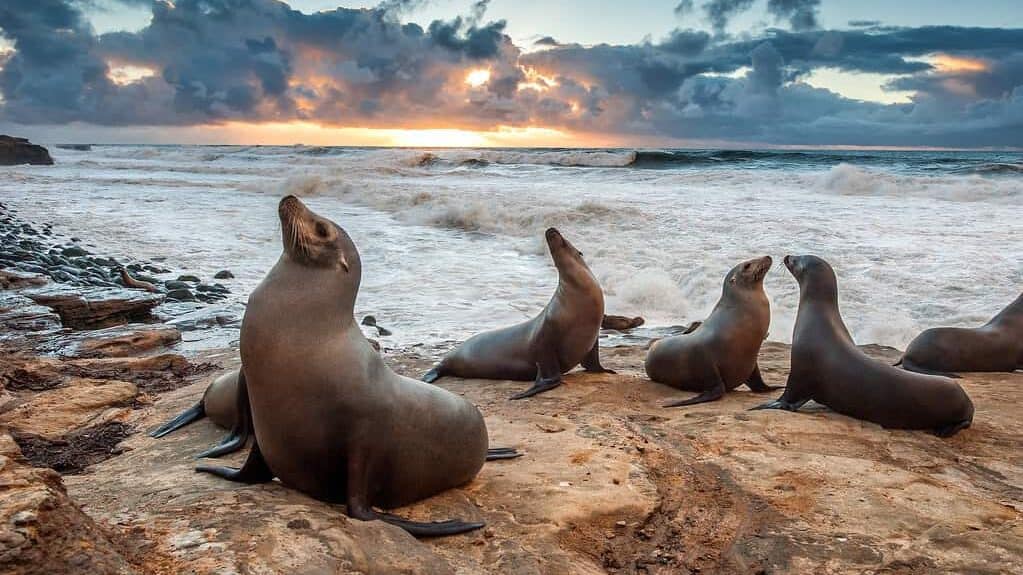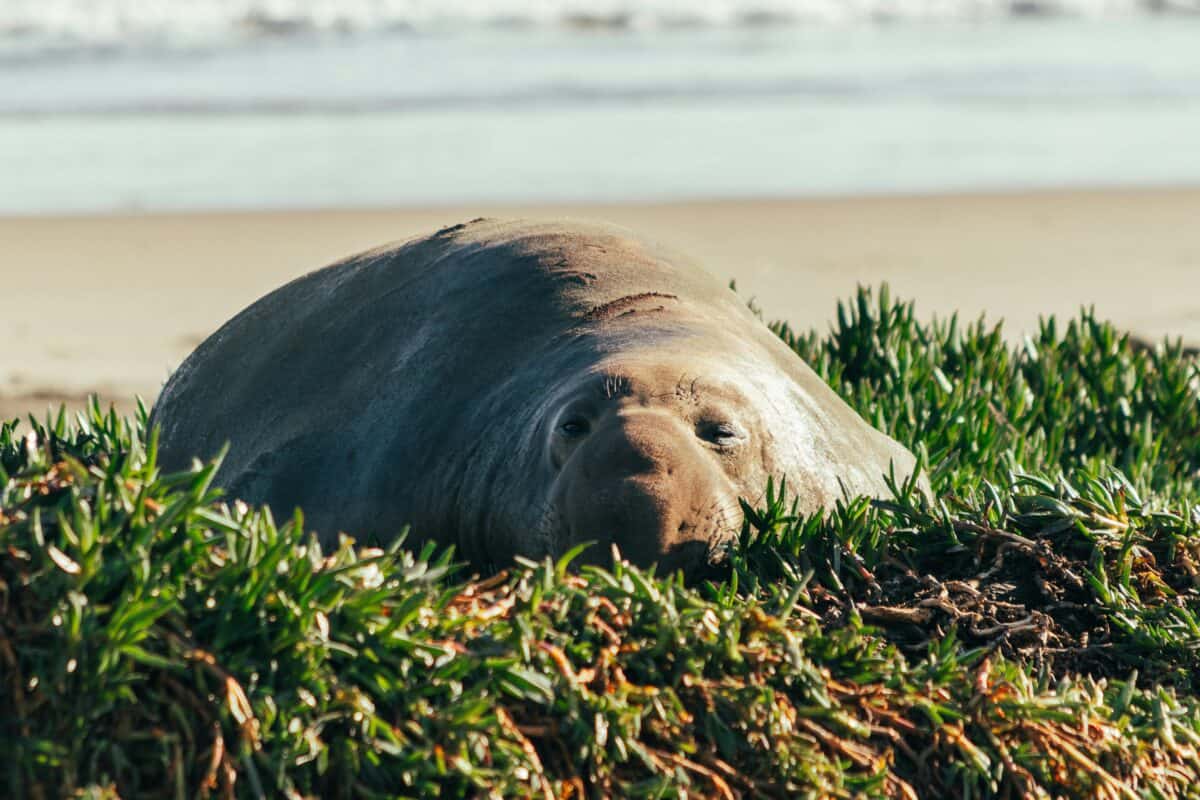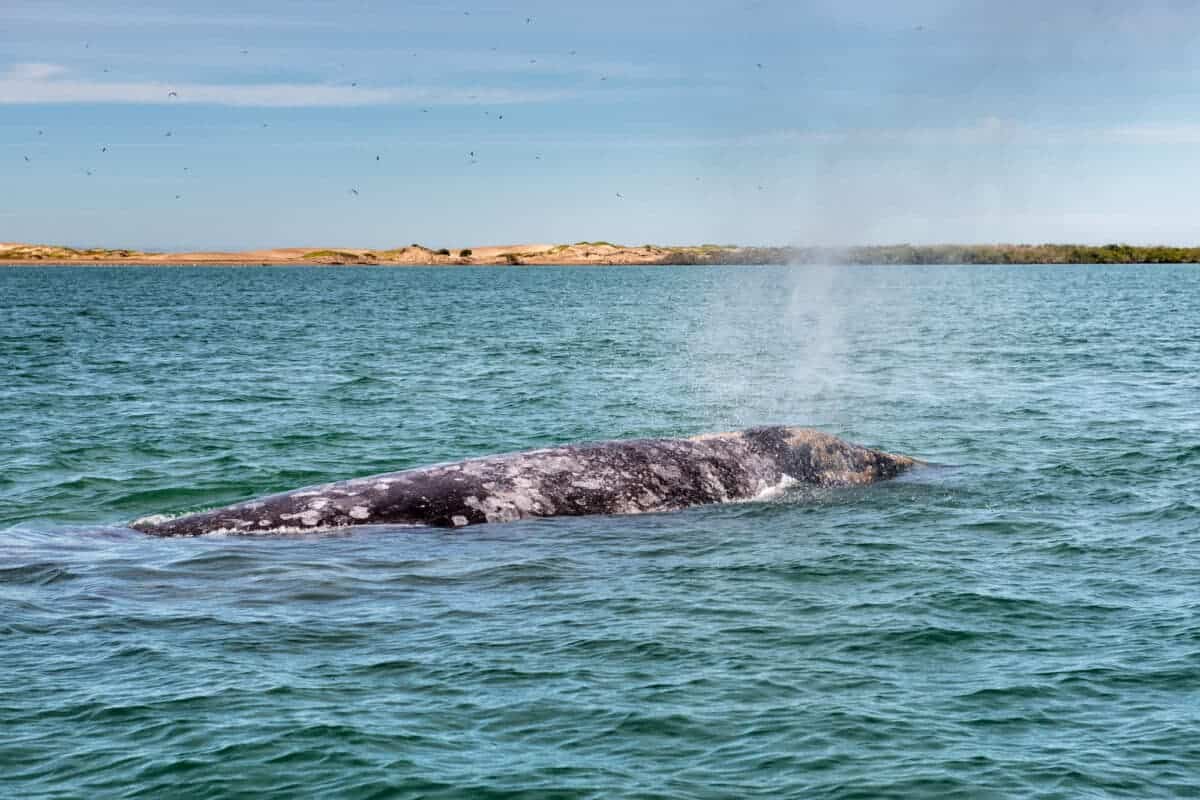The waters off Northern California’s rugged coastline harbor an extraordinary diversity of marine mammals, creating one of the most vibrant marine ecosystems in the world. From the massive blue whale—the largest animal ever to have lived on Earth—to the playful sea otter, these waters support an incredible array of species that captivate both scientists and nature enthusiasts alike. The unique geographical features of this region, including the nutrient-rich California Current and deep submarine canyons just offshore, create perfect conditions for marine life to thrive. This article explores the fascinating marine mammals that inhabit or migrate through Northern California’s coastal waters, their behaviors, conservation status, and the best times and places to observe these magnificent creatures in their natural habitat.
The Rich Marine Ecosystem of Northern California

Northern California’s coastal waters represent one of the most productive marine ecosystems on the planet. The region sits within the California Current Large Marine Ecosystem, which stretches from southern British Columbia to Baja California. This current brings cold, nutrient-rich waters southward along the coast, supporting massive blooms of phytoplankton that form the base of an incredibly productive food web. Seasonal upwelling events further enhance this productivity, bringing deep, nutrient-laden waters to the surface and fueling explosive growth of marine life.
The underwater topography off Northern California features dramatic submarine canyons, seamounts, and continental shelf edges that create diverse habitats. The Monterey Submarine Canyon, comparable in size to the Grand Canyon, plunges to depths of over 10,000 feet just offshore. These features concentrate nutrients and prey species, attracting an impressive diversity of marine mammals. The combination of abundant food resources and varied habitats makes these waters critical feeding grounds, migration corridors, and breeding areas for numerous marine mammal species throughout the year.
Gray Whales: The Coast’s Reliable Migrants

Gray whales (Eschrichtius robustus) are perhaps the most reliable cetacean visitors to Northern California’s coastal waters. Each year, these massive mammals undertake one of the longest migrations of any mammal, traveling approximately 10,000 miles round trip between their feeding grounds in the Arctic and breeding lagoons in Baja California, Mexico. Northern California serves as a crucial waypoint during this epic journey. The peak of the southbound migration occurs from December through February, while the northbound migration—often featuring mothers with newborn calves swimming close to shore—takes place from March through May.
What makes gray whales particularly special for coastal observers is their tendency to travel remarkably close to shore, sometimes within a hundred yards of the coastline. Unlike many other whale species, gray whales are bottom feeders, using their baleen to filter small crustaceans from seafloor sediments. Their distinctive mottled gray appearance, heart-shaped blows, and lack of a dorsal fin (instead having a series of bumps along their back) make them relatively easy to identify. Prime viewing locations include Point Reyes National Seashore, Bodega Head, and the Mendocino Headlands, where patient observers can witness these ancient mariners on their remarkable journey.
Humpback Whales: Acrobats of the Sea

Humpback whales (Megaptera novaeangliae) are among the most charismatic and acrobatic of all cetaceans seen off Northern California. These magnificent creatures, reaching lengths of up to 50 feet, are known for their spectacular surface behaviors, including breaching (leaping entirely out of the water), tail-slapping, and pectoral fin slapping. Their population has rebounded significantly since the end of commercial whaling, and they now frequent Northern California waters primarily from April through November, with peak numbers during summer months when they feed voraciously on anchovies, sardines, and krill.
What distinguishes humpbacks from other large whales are their extraordinarily long pectoral fins (nearly one-third of their body length), distinctive knobby protuberances on their head called tubercles, and the dramatic black and white patterns on the undersides of their flukes, which serve as unique identifiers for individual whales. The Farallon Islands, Monterey Bay, and the Greater Farallones National Marine Sanctuary are hotspots for observing these magnificent animals. Humpbacks are also known for their complex songs and sophisticated feeding techniques, including the spectacular “bubble net feeding,” where groups of whales coordinate to encircle schools of fish with curtains of bubbles.
Blue Whales: The Ocean’s Giants

The waters off Northern California host seasonal visits from blue whales (Balaenoptera musculus)—the largest animals ever to have lived on Earth. These marine giants can reach lengths of up to 100 feet and weights exceeding 200 tons, with hearts the size of small cars and tongues that can weigh as much as an elephant. Their presence in Northern California waters typically peaks from July through October, when they arrive to feed primarily on krill. Despite their enormous size, blue whales feed almost exclusively on these tiny shrimp-like crustaceans, consuming up to 4 tons daily during peak feeding periods.
Blue whales are distinguishable by their mottled blue-gray coloration, small dorsal fin positioned far back on their body, and tall, columnar blows that can reach 30 feet in height. Though they were hunted to near extinction during the 20th century, with population numbers reduced by an estimated 97%, protection has allowed for modest recovery. The waters west of the Farallon Islands and the edges of the continental shelf are particularly important feeding grounds. Scientists from institutions like the Cascadia Research Collective and Point Blue Conservation Science conduct annual surveys to monitor population trends and movements of these endangered leviathans in California waters.
Harbor Seals: The Coast’s Year-Round Residents

Harbor seals (Phoca vitulina) are among the most commonly observed marine mammals along Northern California’s coast, with a year-round presence in the region. These medium-sized pinnipeds, reaching lengths of about 5-6 feet and weights of up to 300 pounds, are beautifully adapted for life in the coastal environment. Unlike their relatives the sea lions, harbor seals cannot rotate their hind flippers forward, giving them a distinctive caterpillar-like movement on land. Their spotted coats vary from silver-gray to dark brown or nearly black, providing excellent camouflage against both rocky shores and sandy beaches.
Harbor seals can be observed hauled out on rocks, beaches, and mudflats throughout Northern California. Prime viewing locations include Jenner at the mouth of the Russian River, Elkhorn Slough near Moss Landing, Drakes Estero in Point Reyes National Seashore, and Bolinas Lagoon. Pupping season occurs from March through June, when mother seals give birth to single pups that can swim almost immediately. During this sensitive time, it’s particularly important for observers to maintain their distance, as disturbance can cause mothers to abandon their pups. These adaptable mammals feed primarily on fish, squid, and crustaceans, typically diving to depths of about 300 feet for 5-10 minutes at a time.
California Sea Lions: The Boisterous Barkers

California sea lions (Zalophus californianus) are among the most vocal and social marine mammals found along Northern California’s coast. These charismatic pinnipeds are easily recognized by their dog-like faces, external ear flaps, and ability to “walk” on land using all four flippers. Males are substantially larger than females, reaching lengths of up to 8 feet and weights of 800 pounds, with distinctive sagittal crests that develop on top of their heads as they mature. Their loud barking vocalizations are a familiar sound at coastal hotspots like Pier 39 in San Francisco, where they famously began congregating in large numbers following the 1989 Loma Prieta earthquake.
While they breed on islands off Southern California and Mexico from May through July, many male and juvenile California sea lions migrate northward afterward, populating Northern California waters from August through May. They’re frequently observed porpoising (leaping while swimming), basking in the sun on buoys and docks, and performing aquatic acrobatics. These agile swimmers feed primarily on schooling fish like anchovies, sardines, and herring, as well as squid. Additional viewing locations include the Año Nuevo State Reserve, Monterey’s Coast Guard Pier, and offshore rocks near Point Reyes and Bodega Bay. Their population has rebounded impressively since receiving protection, with current estimates exceeding 300,000 individuals.
Northern Elephant Seals: The Remarkable Recoverers

Northern elephant seals (Mirounga angustirostris) represent one of conservation’s greatest success stories. Hunted to near extinction by the late 1800s—with perhaps fewer than 100 individuals remaining—these enormous pinnipeds have made an astonishing recovery and now number over 150,000. Males are among the most sexually dimorphic of all mammals, reaching lengths of 16 feet and weights of 5,000 pounds, with distinctive trunk-like proboscises that give the species its name. Their massive size, dramatic proboscis, and the loud, resonating vocalizations of males during breeding season make them unforgettable to observe.
Northern California hosts significant elephant seal breeding colonies at Año Nuevo State Reserve and Point Reyes National Seashore. The breeding season peaks from December through March, when massive males battle for dominance and harems of females, while birthing and mating occur on the beaches. Outside the breeding season, elephant seals spend 8-10 months at sea, making extraordinary dives to depths exceeding 5,000 feet—deeper than any other pinniped—and staying submerged for up to two hours. They feed primarily on squid, skates, rays, and small sharks in the deep ocean. Their twice-yearly “catastrophic molt,” where they shed their entire outer skin and fur layer over several weeks, can also be observed at these rookeries during spring and summer months.
Southern Sea Otters: The Ecosystem Engineers

The southern sea otter (Enhydra lutris nereis) represents one of the most ecologically significant marine mammals along California’s central coast, with their range extending into the southern portions of what is considered Northern California. These charismatic animals are the smallest marine mammals, weighing between 35-90 pounds, yet they have the densest fur of any mammal on Earth—up to one million hairs per square inch. This luxurious fur, which unfortunately made them targets for the fur trade that nearly drove them to extinction, helps them maintain body temperature without the blubber layer that other marine mammals possess. Their playful behavior, tool use, and habit of floating on their backs while using their bellies as dinner tables make them a favorite of coastal visitors.
Sea otters play a crucial role as keystone species in kelp forest ecosystems. By consuming sea urchins that would otherwise devour kelp, they help maintain healthy kelp forests that provide habitat for countless other species. Their population, once reduced to approximately 50 individuals hidden in the Big Sur coastline, has slowly rebounded to around 3,000 animals. While their primary range centers on Monterey Bay and points south, occasional individuals are now being spotted as far north as San Francisco Bay and Tomales Bay. Sea otters consume approximately 25% of their body weight daily in shellfish, crustaceans, and other invertebrates. Prime viewing locations include Monterey Bay’s Elkhorn Slough, Point Lobos State Reserve, and Moss Landing Harbor, where they can often be observed close to shore.
Orcas: The Ocean’s Apex Predators

Orcas, or killer whales (Orcinus orca), represent the ocean’s ultimate apex predators and make seasonal appearances off Northern California’s coast. These striking black and white members of the dolphin family are immediately recognizable by their tall dorsal fins, which in adult males can reach heights of up to 6 feet. Several distinct ecotypes of orcas visit these waters, each with specialized diets and behaviors. Transient (or Bigg’s) orcas, which primarily hunt marine mammals, are the most frequently observed type along the Northern California coast. These stealthy hunters travel in small family groups and may be spotted pursuing prey such as seals, sea lions, and even gray whale calves during spring migration.
Offshore orcas, which specialize in hunting sharks and rays, and occasionally the fish-eating resident orcas, also make appearances in these waters. Orca sightings typically increase during gray whale migration periods when transients patrol the migration corridor. Monterey Bay, the Farallon Islands, and Point Reyes are hotspots for potential orca encounters, though sightings remain unpredictable. Research by organizations like the California Killer Whale Project continues to expand our understanding of these complex, highly intelligent social mammals. Recent studies have documented increasing numbers of orcas in California waters, possibly related to shifting prey distributions due to changing ocean conditions.
Pacific White-Sided Dolphins: The Acrobatic Socialites

Pacific white-sided dolphins (Lagenorhynchus obliquidens) are among the most acrobatic and social cetaceans regularly observed off Northern California. These medium-sized dolphins, reaching lengths of 7-8 feet and weights of around 300 pounds, are known for their striking black, gray, and white coloration pattern featuring a dark back, light gray sides with distinctive white “suspender” stripes, and white belly. Highly gregarious, they typically travel in pods of 10-100 individuals, though spectacular super-pods numbering in the thousands have been documented in Monterey Bay and off the Farallon Islands during periods of abundant prey.
These energetic dolphins are famous for their aerial displays, including spinning leaps, somersaults, and synchronized swimming. They’re also known for their playful behavior around boats, often riding bow waves and stern wakes. While present year-round in Northern California waters, their numbers typically peak during spring and fall, when they follow their preferred prey of schooling fish like anchovies, herring, and squid. Unlike some cetacean species, Pacific white-sided dolphins have maintained relatively stable populations, though they face ongoing threats from fishing gear entanglement and ocean pollution. The offshore waters of Monterey Bay, the Farallon Islands, and Point Reyes offer the best chances for encountering these charismatic dolphins, particularly during whale watching excursions.
Harbor Porpoises: The Shy Coastal Dwellers

Harbor porpoises (Phocoena phocoena) are among the smallest and most elusive cetaceans found in Northern California waters. Reaching just 5-6 feet in length and weighing approximately 120 pounds, these diminutive marine mammals are easily overlooked despite their year-round presence in coastal waters. Unlike their more flamboyant dolphin relatives, harbor porpoises are shy and typically avoid boats and human activity. They’re characterized by their small, triangular dorsal fin, dark gray back, lighter gray sides, and white belly. Their surfacing behavior is subtle—a quick, rolling movement where they rarely show more than their dorsal fin and a small portion of their back before disappearing again.
After nearly disappearing from San Francisco Bay during the mid-20th century due to pollution and habitat degradation, harbor porpoises have made a remarkable return in recent decades as water quality has improved. Today, they can be regularly observed from coastal vantage points throughout Northern California, particularly in protected bays, straits, and harbor entrances. The Golden Gate Bridge’s vista points, Lime Point in Sausalito, and the waters around Angel Island offer excellent viewing opportunities. These small cetaceans feed primarily on schooling fish like herring, anchovies, and small bottom-dwelling fish, which they locate using sophisticated echolocation. Unlike many other cetaceans, harbor porpoises tend to be solitary or travel in small groups of 2-5 individuals, making patient observation necessary for spotting them.
Impacts of Climate Change on Northern California’s Marine Mammals

Climate change is significantly altering the marine ecosystem off Northern California, with profound implications for the region’s marine mammals. Rising ocean temperatures are shifting the distribution of prey species, forcing many marine mammals to travel farther or change their traditional feeding grounds. The intensity and frequency of marine heatwaves—such as the infamous “Blob” that persisted from 2014-2016—have increased, causing widespread ecosystem disruption. These heatwaves have led to food shortages, mass strandings, and even die-offs of species like sea lions and whales. Additionally, ocean acidification and changing current patterns further stress marine life, while entanglement risks rise as animals wander into new territories in search of food. As climate patterns continue to evolve, the survival of Northern California’s marine mammals may depend on our ability to understand, mitigate, and adapt to these rapidly changing conditions.
- The Comeback of the Iberian Lynx: Europe’s Rarest Cat - August 22, 2025
- Marine Mammals Seen Off the Coast of Northern California - August 22, 2025
- The Secret World of Jaguars in the Amazon Rainforest - August 22, 2025

